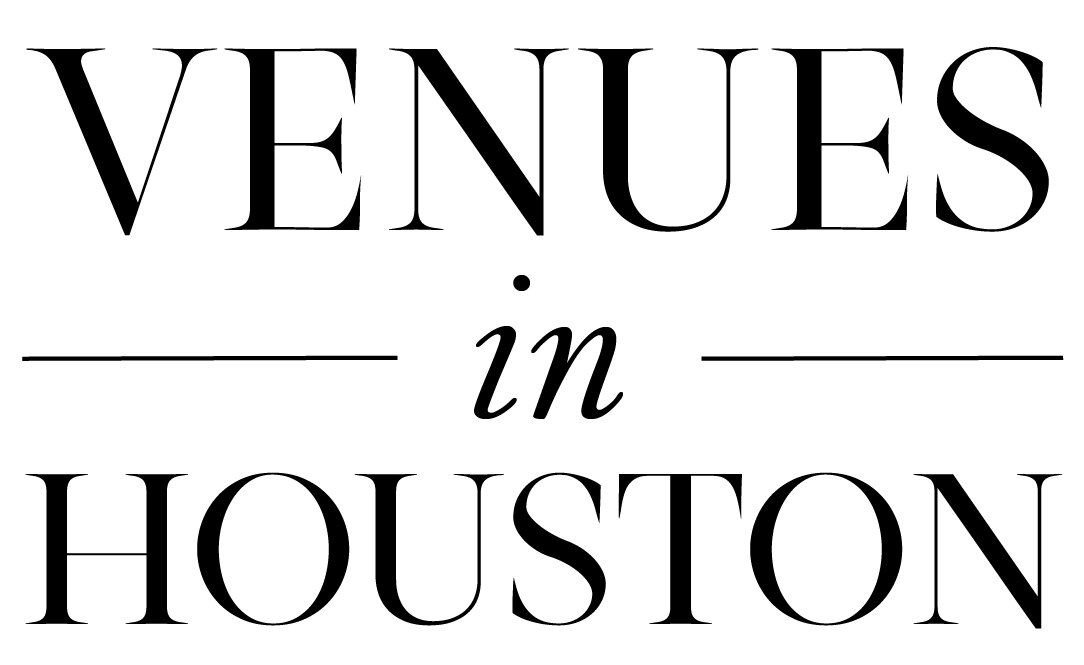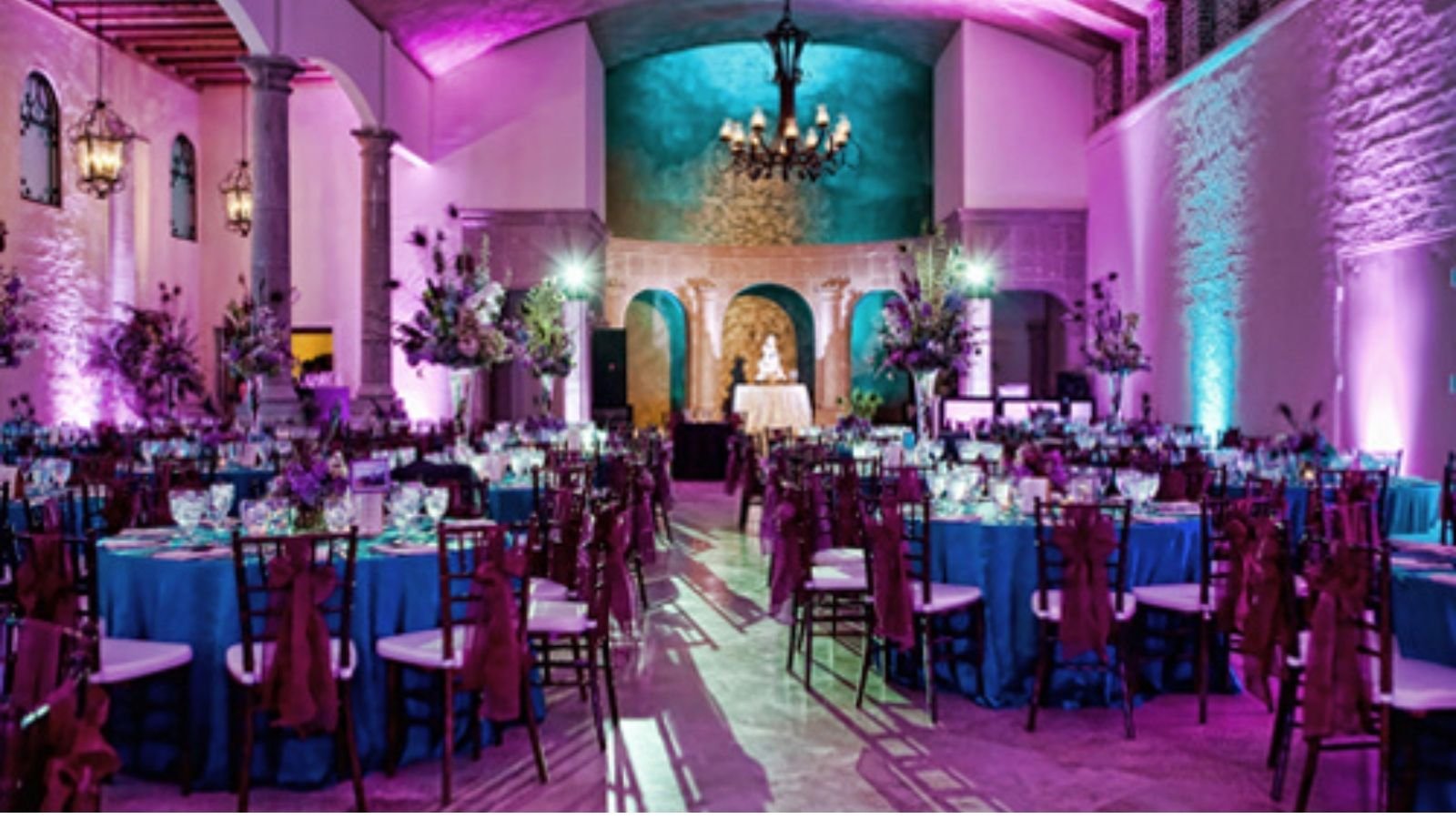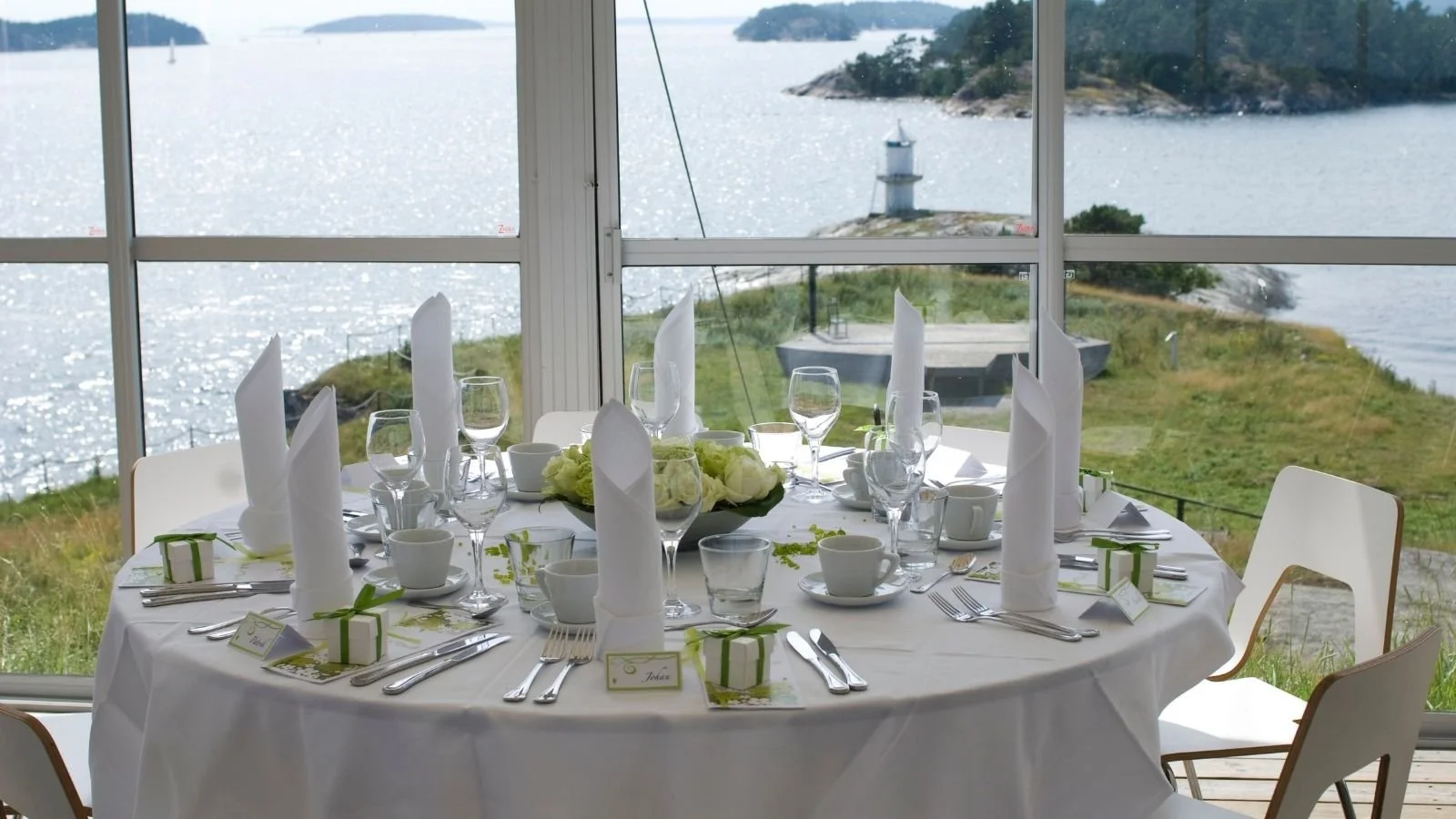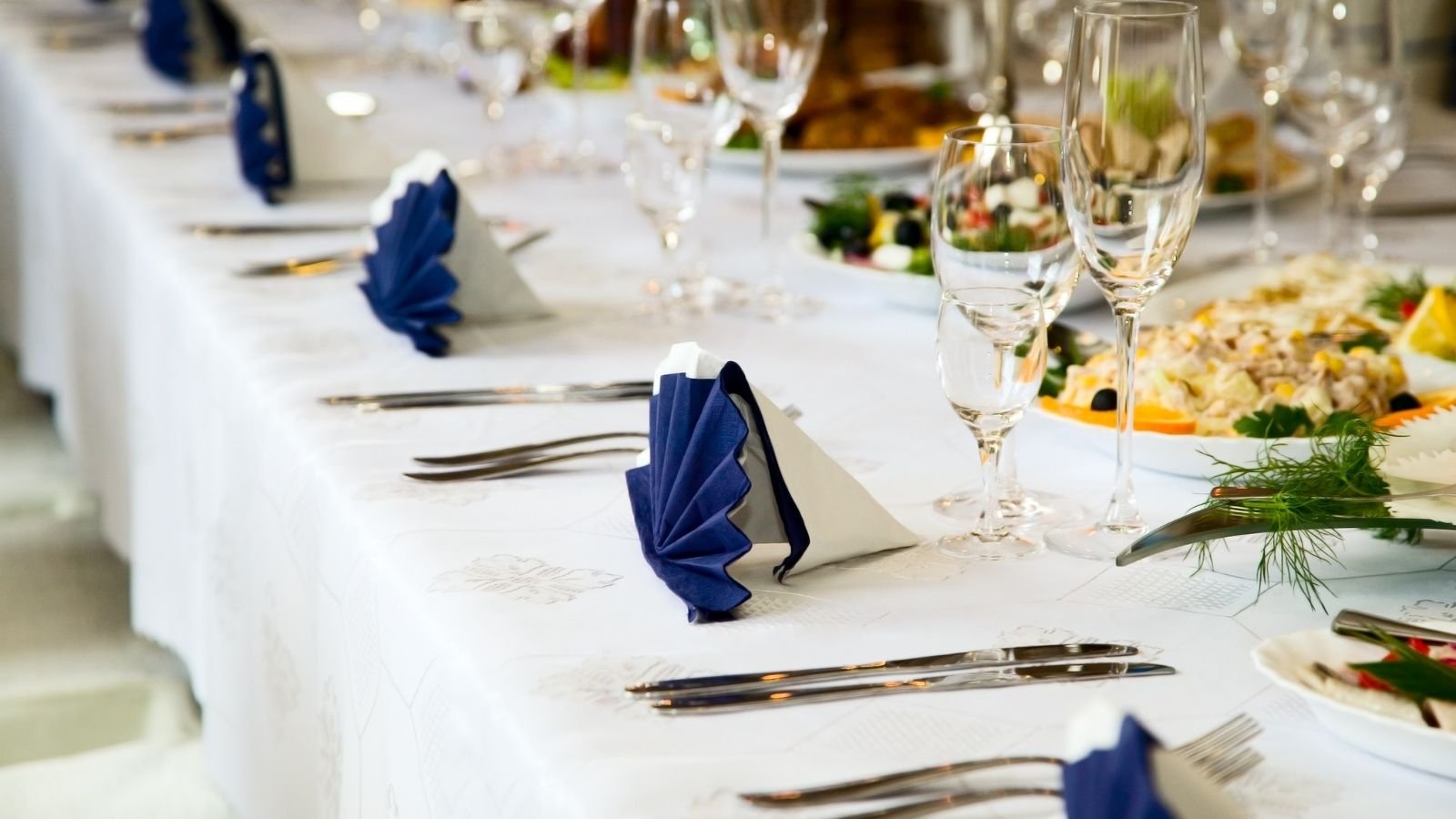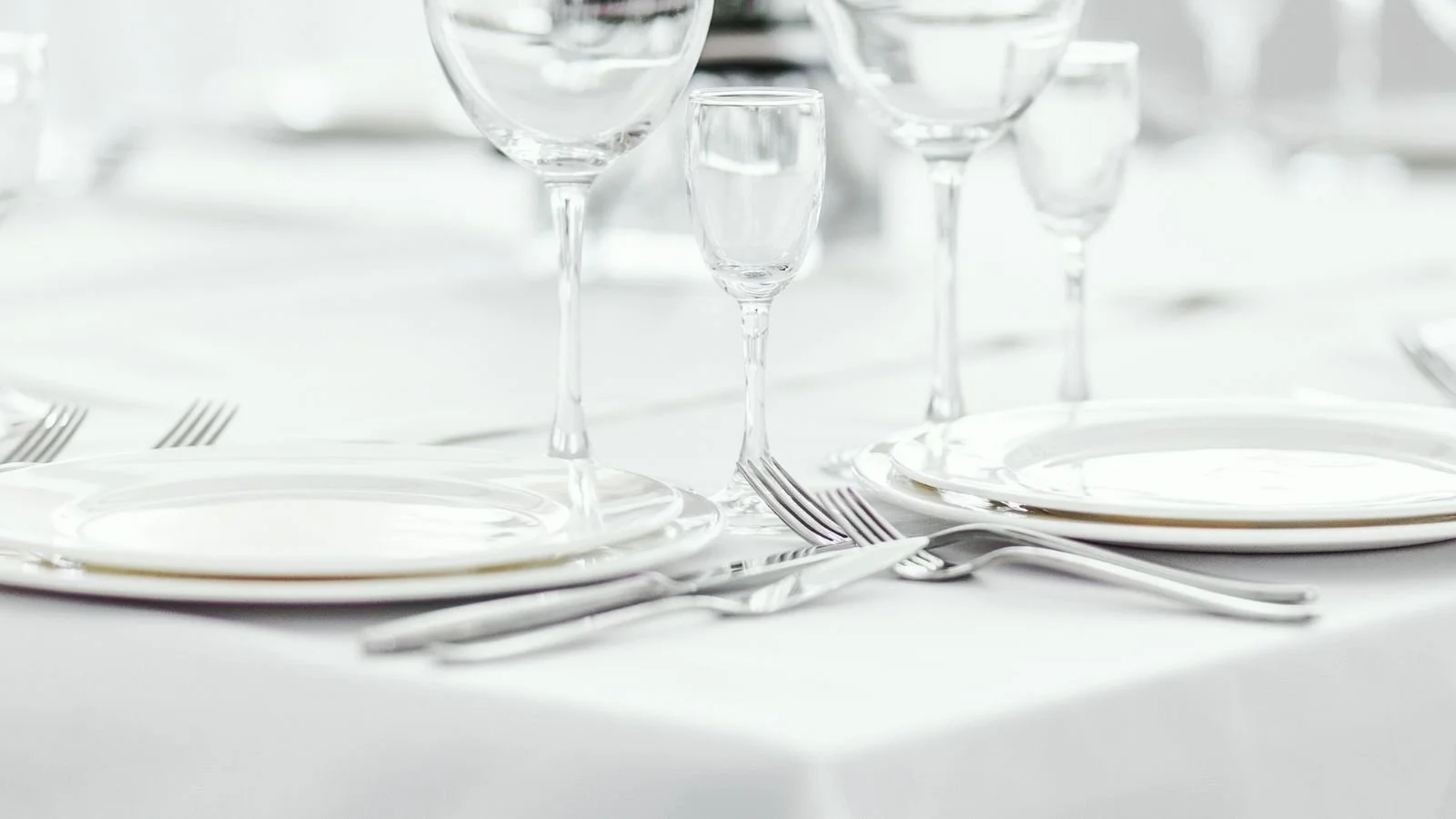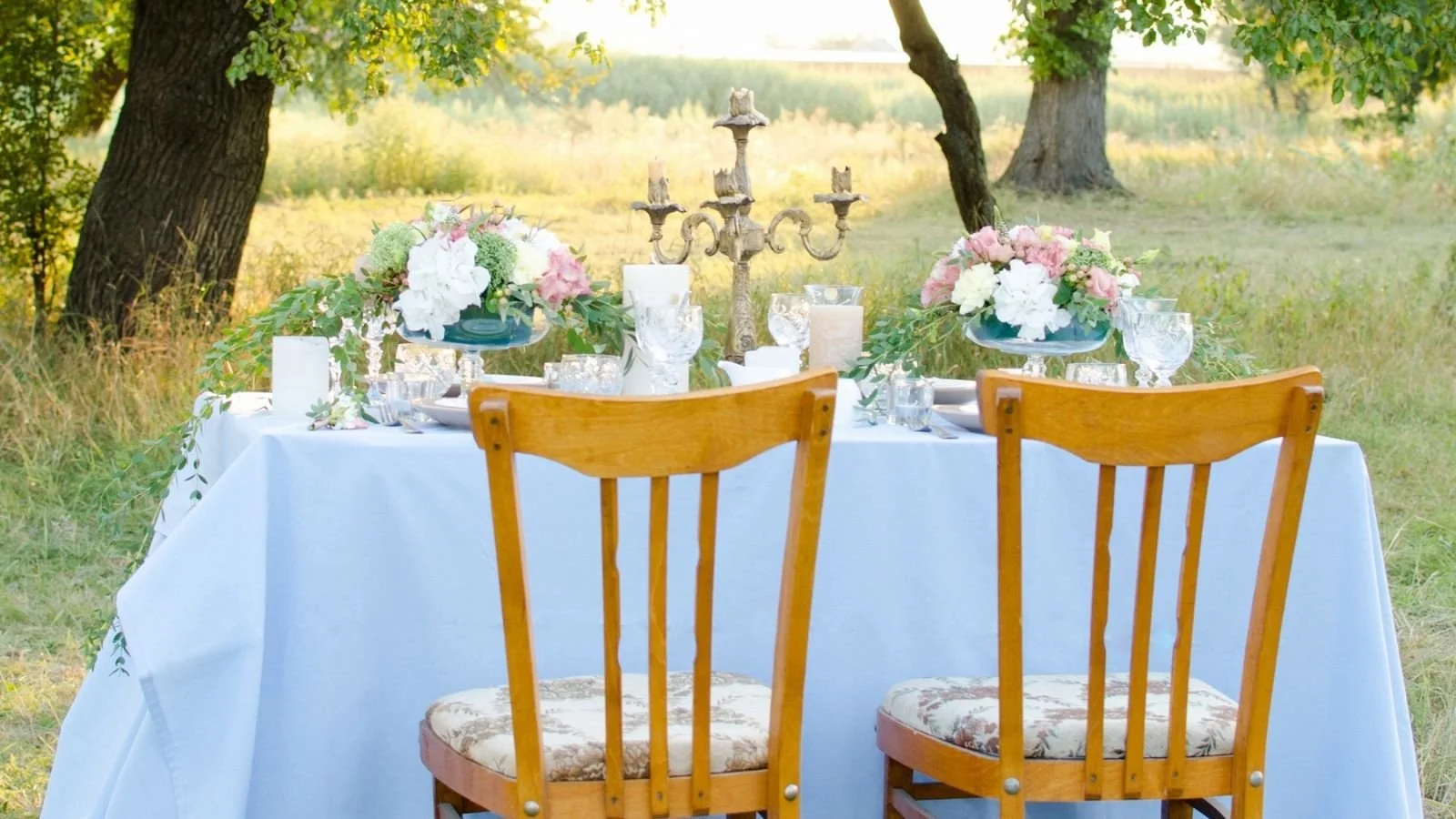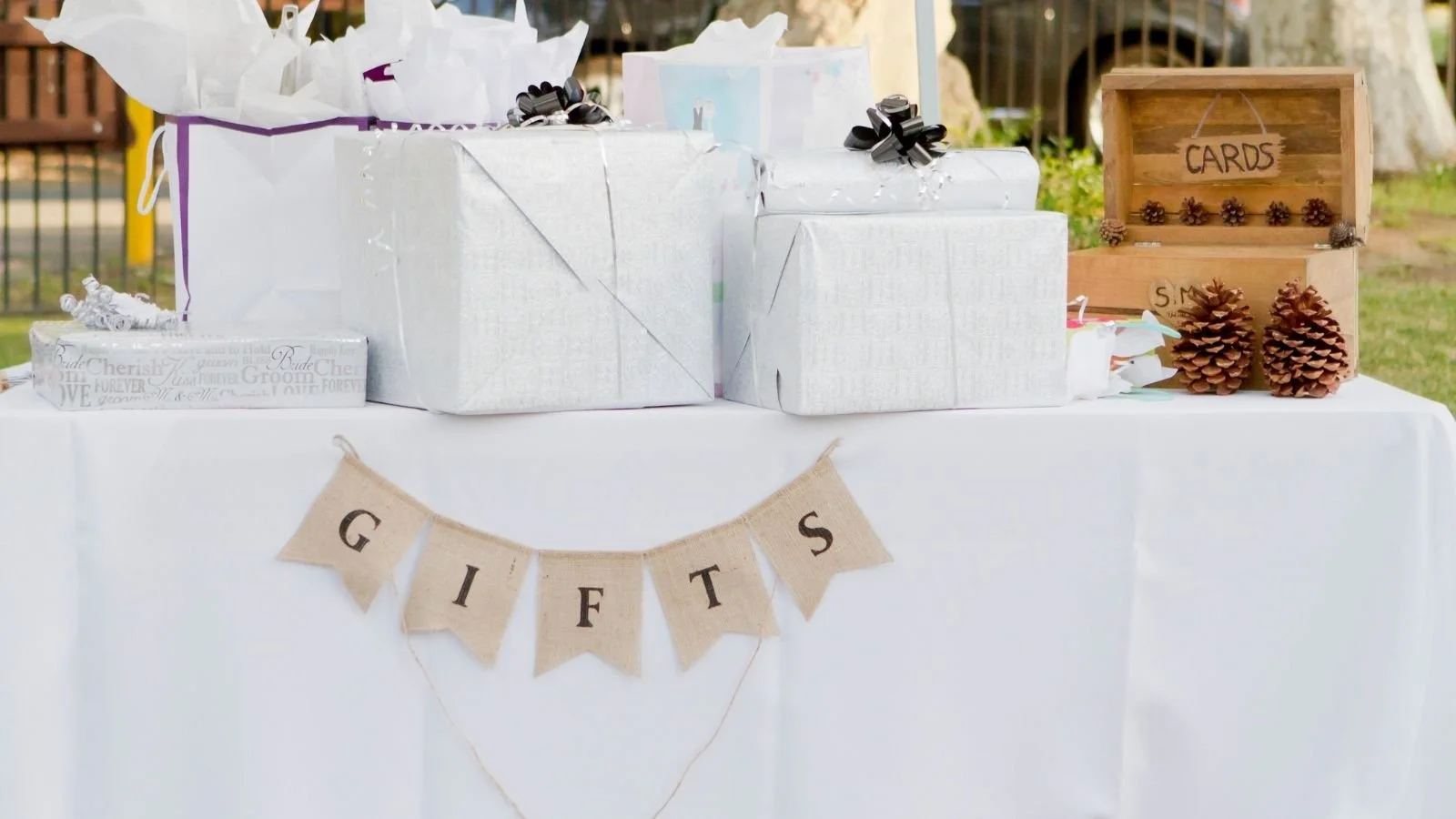Photo courtesy of The Bell Tower on 34th.
Deciding on the shape of your reception tables likely didn’t spring to mind when you first considered your wedding planning process, but this design element is more important to your celebration than you might think.
From how the room will look and flow, to how much space guests will have to mill about, to whether you’re going for an intimate, dinner party-style setting or a grand affair set off by a king’s table, the shape of your tables will play a large role in setting the scene.
To help you decide, we’ve compiled a list of your options and why each one may or may not work for your reception.
Round tables
Pros: This classic choice is often the most cost-effective route for several reasons. First, many venues already stock round tables, eliminating the need for rentals. Second, standard sizes, including 36, 48, 60, and 72-inch options, seat anywhere from four to 12 guests comfortably, more than other shapes. Also, the more folks you can fit at the table means fewer tables to decorate, saving you money on centerpieces. Finally, there is no limit to how many linen options you’ll find.
Cons: Really, there are few cons to round tables unless you simply don’t like the look of them. Round tables tend to have a traditional vibe. If you’d prefer a different feel to your reception, you have plenty of other options.
Rectangular tables
Pros: Also called banquet tables, rectangular tables can create a beautiful, streamlined symmetry to your seating design. What’s more, they can fit from four to 10 people, depending on how long they are. A fun way to work with this style is to link several together to create a dramatic, long setting. This allows for ease of conversation, but make sure you don’t overdo it on the centerpieces and block people’s lines of sight between one another. This style is also ideal for outdoor receptions where you may have more space to spread out.
Cons: Going with rectangular tables will likely cost you more, as they don’t fit as many folks as other styles and take up more floor space to seat the same number of guests as rounds. They also don’t typically work for receptions with a large guest list; they are more suited to intimate gatherings or micro weddings.
Square tables
Pros: Like round tables, squares can handle large centerpieces while still keeping the setting intimate for your guests. Plus, they tend to work in most reception venue spaces, so they can be a good, modern alternative to rounds depending on how many guests you will be hosting and how much space you have to work with.
Cons: Square tables tend to take up a decent amount of floor space, so if your venue is on the smaller side you may want to consider round tables. Also, renting square-shaped linens isn’t always easy as most vendors largely carry round and rectangular-shaped selections.
Sweetheart tables
Pros: A small, two-seater table reserved especially for the bride and groom can be a romantic, intimate, and welcome choice to the bride and groom who want to take a moment to bask in their new status as husband and wife.
Cons: Sitting separately from your guests can create unwanted distance.
King’s Table or Head Table
Pros: If you’re looking for a dramatic reception design, this might be the way to go. With a king’s table, guests of honor, including the bride and groom, their parents, and their attendants, are seated together at a head table. The rest of the guests are seated at round or rectangular tables. This gives the newlyweds intimate time with their most cherished guests and adds a bit of flair to the table arrangements.
Cons: This type of seating limits conversation, as everyone at the table is seated alongside one another rather than across from one another.
Serpentine tables
Pros: Pushing several curved tables together to create a winding seating arrangement can add a fun and interesting visual element to your reception. As long as you can fit all of your guests in your curvy, creative space, this option is sure to be an attention-grabber and conversation starter.
Cons: A serpentine set-up calls for a decent amount of space and likely won’t be achieved indoors.
More Tables
Once your guest seating is sorted, there also are decisions about how to present your cake and gifts, which require their own tables. Generally, these tables’ decor and presentation should match that of the main tables, but you can have some fun with them, as well.
A simple, white linen-clad table to showcase an intricate wedding cake is a beautiful choice, but you can also opt to spruce it up with florals, greenery, signage, line, fur, candles, or other design elements that complement your reception’s ambiance. You can also look for fun options such as a vintage cart to roll out your wedding cake or an old-fashioned gift wagon for guests to place your presents.
Whatever you choose for these specialty tables and your guests’ seating, be sure to consider your space, your budget, the feel and flow of the reception room, and your goals for how you want your guests to experience the celebration.
